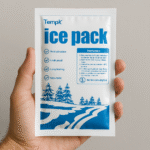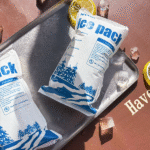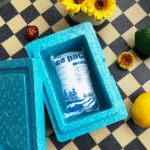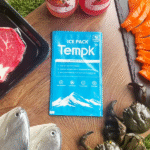Cold Chain Monitoring System: Real Time Visibility & 2025 Trends
Einführung: A cold chain monitoring system uses sensors, data loggers and communication platforms to track temperature, humidity and other environmental factors across storage and transportation. Ab 2025, the global cold chain monitoring market is projected to grow from USD 6.8 Milliarden in 2025 in USD 13.4 Milliarden von 2032, reflecting a 12.1 % CAGR. Poor temperature control contributes to nearly 20 % of food loss globally, und bis zu 40 % of horticultural produce waste in India. By integrating real time monitoring with AI analytics and regulatory compliance, you can prevent spoilage, reduce waste and build a resilient supply chain.
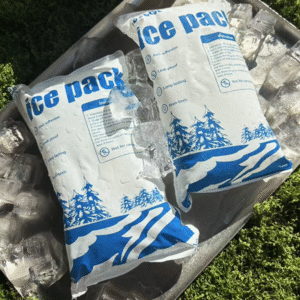
What makes a cold chain monitoring system essential? Understand why real time visibility prevents product loss and ensures regulatory compliance.
What technologies underpin modern monitoring systems? Datenlogger vergleichen, IoT -Sensoren, RFID, GPS-Tracker, BLE-Sensoren, Intelligente Kühlcontainer und Cloud-Plattformen.
How to implement a cold chain monitoring system effectively? Discover step by step guidance on selecting sensors, integrating platforms and managing data.
What regulatory and sustainability factors influence monitoring? Learn how FSMA, GDP guidelines and carbon reduction initiatives drive adoption.
What are the latest trends and innovations for 2025? Explore AI powered predictive analytics, blockchain traceability and energy efficient practices shaping the future.
Why Is a Cold Chain Monitoring System Essential?
Direkte Antwort: Cold chain monitoring systems provide continuous oversight of environmental conditions during the storage and transport of temperature sensitive goods. Without such systems, temperature excursions frequently go unnoticed until after delivery, leading to product degradation. Real time monitoring enables immediate alerts so that operators can intervene, protecting high value shipments like vaccines, biologics and perishable foods. Considering that über 25 % of temperature excursions occur during last mile delivery, real time systems are essential to maintain product integrity and avoid financial losses or regulatory violations.
Erweiterte Erklärung: The cold chain consists of multiple stages—production, Lagerung, transportation and distribution. At each handoff, products risk exposure to ambient temperatures. Historisch, shippers relied on data loggers that record conditions only after transit, making the system reactive. Modern cold chain monitoring uses sensors placed in packages, vehicles or storage units to transmit data every few minutes. This proactive approach provides early warnings, allowing you to take corrective action before goods spoil. Zum Beispiel, IoT-based sensors installed in refrigerated trucks send data to cloud dashboards, enabling logistics managers to track shipments across multiple locations. Automated alerts notify operators of temperature deviations, saving high value shipments and ensuring compliance with regulations like the UNS. FDA’s Food Safety Modernization Act (FSMA). Darüber hinaus, data can be analysed to identify recurring hotspots, optimize routes and improve the overall efficiency of the supply chain.
Real Time Monitoring vs. Traditional Data Logging
Detailed Information: Traditional monitoring relied on temperature and humidity data loggers—small, battery powered devices that record conditions for later retrieval. They provide valuable historical data but fail to prevent incidents in real time. Modern systems upgrade this approach by integrating IoT-basierte drahtlose Sensoren that transmit data continuously via Wi Fi, cellular or LoRaWAN networks. These sensors enable remote accessibility and automated alerts, reducing manual data collection and speeding response times. A major advantage of IoT sensors is the ability to integrate with cloud platforms and predictive analytics, enabling proactive maintenance and route optimization. Jedoch, they require consistent network connectivity and pose cybersecurity challenges. Choose sensors based on your network infrastructure and risk tolerance.
| Monitoring Method | Eigenschaften | Einschränkungen | What It Means for You |
| Datenlogger | Battery powered devices record temperature and humidity; data downloaded via USB/NFC | No real time alerts; manual retrieval; limited insight | Good for compliance records but reactive. Use as backup or for verifying historical trends. |
| IoT -Sensoren | Wireless sensors send data continuously through Wi Fi, cellular or LoRaWAN | Require network connectivity and may have higher costs; security management needed | Ideal for real time monitoring and proactive alerts; critical for high value shipments. |
| RFID Sensors | Passive tags with embedded temperature sensors; scanned at checkpoints | Begrenzte Reichweite; signal interference from metals or liquids; require infrastructure | Useful for large warehouses or pallet-level tracking; reduces manual logging errors. |
| GPS Trackers | Combine location tracking with temperature monitoring | Need power source; data transmission costs; not ideal for short trips | Provides route visibility and security; essential for long-haul shipments and theft prevention. |
| BLE Sensors | Low-energy sensors transmit data to nearby devices | Short range (30–100 m) and interference issues | Cost effective for warehouses and short-range monitoring; integrate with mobile apps. |
| Smart Reefers | Refrigerated containers with automated cooling and monitoring systems | High energy consumption and maintenance costs | Provide stable temperatures for long-distance transport; useful for pharmaceuticals and seafood. |
| Cloud Platforms | Aggregate data from various sensors for analytics and compliance | Depend on stable internet; recurring subscription costs | Centralize monitoring across multiple facilities; essential for large-scale operations. |
Tips for Choosing the Right Monitoring Technology
Assess your network environment: Determine whether your route or facility has reliable Wi Fi, cellular, or LoRaWAN coverage. IoT sensors require connectivity; in remote areas, choose data loggers with periodic uploads or satellite communication.
Balance cost and risk: For high-value biologics, invest in IoT or GPS solutions despite higher costs; for bulk food shipments, RFID or BLE sensors may suffice.
Integrate with your IT systems: Ensure that sensors and platforms align with your existing warehouse management or transport management system; open APIs facilitate integration.
Plan for redundancy: Combine real-time sensors with backup data loggers to maintain records even if network connectivity fails.
Beispiel aus der realen Welt: Früh 2023, Azerbaijan’s Ministry of Health deployed over 2,100 digital Fridge Tag temperature monitoring devices across national cold chain storage points. These devices log temperatures continuously and trigger alerts for deviations, ensuring vaccine integrity. The initiative marked a major leap from spot check methods, illustrating the benefits of automated monitoring.
Technologies Underpinning Modern Cold Chain Monitoring Systems
This section explores the main technologies used today, ihre Vorteile, limitations and practical applications.
Temperature and Humidity Data Loggers
Direkte Antwort: Data loggers record temperature and humidity over time and store the information internally. They are affordable and easy to use, making them a baseline requirement for most cold chains.
Erweiterte Erklärung: Data loggers come in various forms—USB, NFC or Bluetooth. Some advanced models offer real time transmission to cloud platforms. They are essential for compliance, as they provide historical records showing that goods stayed within safe temperature ranges. Jedoch, because they are not connected continuously, they cannot provide proactive alerts. Use them in combination with other technologies or in areas lacking network connectivity.
IoT Based Wireless Sensors
Direkte Antwort: IoT sensors deliver continuous, remote tracking of temperature and humidity. They transmit data via Wi Fi, cellular, or LoRaWAN networks to cloud platforms, enabling real-time monitoring and automated alerts.
Erweiterte Erklärung: IoT sensors reduce manual data collection and provide remote access through web dashboards or mobile apps. They help ensure that perishable products remain within required temperatures across multiple locations. By analysing trends in temperature fluctuations, predictive maintenance can identify potential equipment failures before they occur. Jedoch, these systems require a robust network and may involve higher installation and subscription costs. Evaluate connectivity coverage and budget when implementing an IoT solution.
RFID Temperature Sensors
Direkte Antwort: RFID temperature sensors integrate RFID tags with temperature monitoring, allowing contactless data collection at checkpoints.
Erweiterte Erklärung: The sensors are embedded in tags that attach to pallets or packages. RFID readers scan them as shipments pass through warehouses or vehicles. This automates scanning and reduces human error. They can simultaneously scan multiple tags, making them efficient for high-volume warehouses. Jedoch, the range is limited and signals may be disrupted by metal surfaces or liquids. Use RFID sensors to improve inventory management and compliance in large facilities.
GPS Based Trackers
Direkte Antwort: GPS trackers combine location and temperature monitoring, providing visibility into both the route and condition of shipments.
Erweiterte Erklärung: These devices are installed inside refrigerated containers or vehicles. When shipments deviate from a planned route or experience a temperature fluctuation, alerts are immediately sent to relevant personnel. They enhance cargo security and allow for route optimization. Jedoch, they depend on consistent power or long lasting batteries and may incur data transmission costs. For long-distance or high-value shipments, GPS trackers offer an additional layer of protection.
Bluetooth niedrige Energie (Bloß) Sensoren
Direkte Antwort: BLE sensors provide cost-effective, energy-efficient monitoring for warehouses and transport vehicles.
Erweiterte Erklärung: BLE sensors transmit data to smartphones, tablets or dedicated gateways within a range of 30–100 m. They are ideal for monitoring temperature in retail storage or short-range environments. Because BLE technology consumes little power, sensors can operate for long periods. Jedoch, their limited range and susceptibility to interference restrict them from long-haul shipments. Use BLE sensors where local, low-cost monitoring suffices.
Smart Refrigerated Containers (Reefers)
Direkte Antwort: Smart reefers are temperature-controlled shipping containers equipped with automated cooling and monitoring systems.
Erweiterte Erklärung: These containers adjust internal temperatures automatically, ensuring stable conditions despite external fluctuations. They are suitable for long-distance transport of pharmaceuticals, frozen foods and fresh produce. Remote monitoring allows operators to check container status and adjust settings via the cloud. The main drawbacks are high energy consumption and maintenance costs. For critical shipments requiring highly stable conditions, smart reefers provide unparalleled reliability.
Cloud-Based Monitoring Platforms and AI Analytics
Direkte Antwort: Cloud platforms aggregate data from various sensors and provide centralized dashboards, analytics and compliance tracking.
Erweiterte Erklärung: These platforms collect data from IoT sensors, RFID tags and GPS trackers across the supply chain. They offer real-time alerts, generate audit-ready reports and support predictive analytics. Integration with AI algorithms identifies trends, anticipates equipment failures and optimizes routes. Cloud-based platforms streamline compliance by automating documentation for regulations like FDA 21 CFR -Teil 11 und WHO-Richtlinien. Jedoch, stable internet connectivity and subscription fees are required. Choose a platform that aligns with your scale, regulatory environment and data integration needs.
Implementing a Cold Chain Monitoring System: Step by Step Guide
Schritt 1: Assess Your Products and Risk Profile
Identify the nature, value and temperature sensitivity of the goods you handle. Pharmaceuticals and gene therapies demand tighter controls and often justify higher monitoring costs. Food shipments may have broader tolerance ranges. Also evaluate the consequences of spoilage—financial loss, regulatory penalties or reputational damage. This risk assessment will determine the monitoring level needed.
Schritt 2: Evaluate Network Infrastructure and Choose Sensors
Determine whether your route and facilities have reliable Wi Fi, cellular, satellite or LoRaWAN coverage. For urban or developed regions, Wi Fi and cellular networks support continuous IoT monitoring. For remote areas, consider LoRaWAN or satellite enabled devices. Match the sensor type (IoT, RFID, GPS, Bloß) to each segment of your chain; combine multiple sensors for redundancy. Ensure sensors meet regulatory requirements and have certifications for food or pharmaceutical use.
Schritt 3: Select a Cloud Platform and Integration Strategy
Choose a cloud platform that aggregates data from all sensors. It should provide dashboards, automatisierte Benachrichtigungen, reporting and API integration with your existing warehouse management system or ERP. Ensure the platform supports data encryption, access control and audit trails to comply with regulations like FDA 21 CFR -Teil 11 and Good Distribution Practice (BIP) Richtlinien. If you operate globally, select a platform that handles multiple languages and region-specific compliance settings.
Schritt 4: Plan Calibration, Maintenance and Data Management
Schedule regular calibration of sensors and loggers. Align calibration intervals with manufacturer recommendations and regulatory requirements. Document calibration certificates in your quality management system. Set up maintenance schedules for hardware, including battery replacement or firmware updates. Implement data retention policies to store historical data as required by regulations (usually 2–5 years) and ensure secure backups.
Schritt 5: Train Your Team and Establish SOPs
Provide training for warehouse staff, drivers and quality personnel on the operation of monitoring devices and response protocols. Develop standard operating procedures for responding to alerts, data documentation and auditing. Integrate monitoring actions into your hazard analysis and critical control points (Haccp) plan or Good Distribution Practices to align with regulatory frameworks.
Schritt 6: Pilot and Scale Up
Begin with a pilot on a specific route or facility to test sensors, platforms and processes. Gather feedback from users and refine your approach. Einmal validiert, gradually scale across your supply chain. Monitor key performance indicators (KPIs) such as temperature excursion rate, spoilage reduction and cost savings. Continuous improvement ensures your monitoring system adapts to changing products, regulations and technologies.
Regulatory and Sustainability Factors Influencing Monitoring Systems
Compliance Requirements
Regulations play a central role in cold chain monitoring. In den Vereinigten Staaten, Die FSMA mandates continuous temperature monitoring and recordkeeping across the supply chain. Pharmaceutical supply chains must also comply with Gute Vertriebspraxis (BIP) Und WHO guidelines, which require validated temperature-controlled systems, audit-ready data and digital traceability. Der FDA’s 21 CFR -Teil 11 stipulates electronic records and signatures for pharmaceuticals, meaning your monitoring platform must provide secure data access, audit trails and time stamps. Failing to comply can result in shipment detention, recalls or fines. International, guidelines like the EU-BIP Und Internationale Luftverkehrsvereinigung (Iata) Temperature Control Regulations also influence monitoring requirements.
Sustainability and Carbon Reduction
Monitoring systems contribute to sustainability by reducing food waste and enabling energy-efficient operations. Wie das International Institute of Refrigeration Notizen, 20 % of global food loss is due to inadequate temperature control. Reducing spoilage through real-time monitoring saves resources and lowers emissions. Companies are also pushing to reduce freezer set points from –18 °C to –15 °C—a change that could reduce energy consumption while maintaining product safety. Carbon reduction initiatives encourage the use of renewable energy for refrigerated transportation and storage; monitoring systems help verify energy performance and identify improvement opportunities. Many companies now publish carbon footprints and set targets to reduce them, driving demand for data-rich monitoring systems.
Cost and Accessibility Challenges
Despite the benefits, cost remains a barrier for small and medium enterprises. A comprehensive IoT-based monitoring solution can require capital expenditures exceeding $50,000 per distribution center and ongoing operational costs. Adoption rates remain below 35 % among smaller logistics providers, especially in emerging markets where cost recovery is challenging. Fragmented standards across regions necessitate multiple system configurations, increasing IT costs by 15–20 %. Limited cellular network coverage in rural areas also hampers last-mile monitoring, contributing to product losses exceeding $15 Milliarde jährlich in developing countries. Um diese Herausforderungen zu mildern, consider phased implementation, hybrid technologies (combining data loggers and IoT sensors) and partnerships with technology providers that offer subscription models or equipment leasing.
Latest Trends and Innovations for 2025
Integration of AI and Predictive Analytics
Artificial intelligence is transforming cold chain monitoring. AI algorithms analyse historical sensor data to forecast temperature excursions, equipment failures and route delays. Zum Beispiel, AI can identify patterns in a refrigerated truck’s compressor performance, alerting operators to replace parts before a breakdown occurs. Predictive analytics also optimize delivery schedules by analysing traffic patterns, weather forecasts and product characteristics, reducing both spoilage and fuel consumption. Ein August 2025 industry report highlighted the rising adoption of AI and predictive analytics in cold chain logistics. Companies like Thermo King and Carrier have integrated AI modules into their monitoring platforms to offer automated route adjustments and maintenance notifications.
Blockchain for Enhanced Traceability
Blockchain technology provides immutable, transparent records of temperature data, location and handling events. By creating a decentralized ledger, blockchain ensures that each stakeholder can verify product conditions without relying on a single trusted party. The adoption of blockchain in cold chain monitoring is expected to grow significantly as industries demand greater traceability. This technology also supports compliance by providing time stamped records for auditors. In Zukunft, smart contracts on blockchain may automatically trigger insurance claims or payments when conditions are violated.
Movement Toward Standardization and Reusable Systems
The industry is moving toward standardized container sizes and interoperability protocols to enable reusable packaging and pooling networks. Standardization reduces operational complexities and improves asset utilization. Reusable cold chain packaging is forecast to grow from $4.97 Milliarden in 2025 Zu $9.13 Milliarden von 2034, reflecting sustainability and cost-saving trends (from earlier research on packaging). While packaging pertains to insulation, similar models apply to monitoring hardware—standard connectors and data formats facilitate pooling and reuse of sensors, reducing capital expenditure.
Energy Efficiency and Carbon Footprint Reduction
Energy-intensive refrigeration accounts for a significant portion of cold chain emissions. Companies are exploring energy-efficient equipment and renewable power sources. The industry is also pushing to reduce freezer temperatures from –18 °C to –15 °C to save energy without compromising food safety. Real-time monitoring allows you to validate these adjustments and ensure compliance with safety standards. Partnerships like the Move to –15 °C coalition formed in January 2025 emphasise the role of technology and data in meeting carbon reduction goals.
Drones and Robotics for Automated Inventory and Delivery
Innovations in robotics and drones are enhancing cold chain operations. Zum Beispiel, in November 2024, Gather AI deployed drones with computer vision to automate inventory counting in cold storage warehouses. These drones scan barcodes and temperature labels, improving inventory accuracy and reducing human exposure to cold environments. In the last mile, autonomous delivery robots equipped with insulated compartments and real-time monitoring sensors maintain temperature control while reducing labour costs. Though adoption is still emerging, these technologies illustrate the direction of future cold chain monitoring.
Häufig gestellte Fragen
Q1: How does a cold chain monitoring system help reduce food waste? By providing real-time alerts and data analysis, monitoring systems prevent temperature excursions that cause spoilage. Considering that 20 % of global food loss is due to inadequate temperature control, implementing monitoring can significantly reduce waste and support sustainability goals.
Q2: Are IoT sensors secure enough for pharmaceutical cold chains? IoT sensors offer encryption and secure data transmission, but they still require proper cybersecurity measures. Choose devices with secure firmware, regularly update software, and restrict access to authorized personnel. Consider using blockchain or edge computing to enhance data integrity.
Q3: Can small businesses afford cold chain monitoring? Costs can be high—upward of $50,000 per facility for comprehensive IoT systems—but options exist. Start with data loggers and BLE sensors, scale gradually and explore leasing models or subscription services to spread costs over time.
Q4: What is the difference between RFID and GPS trackers? RFID sensors passively record temperature data and are scanned at checkpoints, while GPS trackers actively transmit both location and temperature data. RFID is ideal for warehouse operations, whereas GPS trackers suit long-haul routes and high-value shipments.
Q5: How can monitoring systems support sustainability goals? Monitoring reduces waste, optimizes energy use and validates carbon reduction strategies like lowering freezer temperatures. Data-driven insights enable smarter route planning, fewer emissions and better inventory management.
Zusammenfassung und Empfehlungen
Key Takeaways: A cold chain monitoring system ensures the integrity of temperature-sensitive goods by providing real-time data and alerts. The market is expanding rapidly, with estimates ranging from $6.8 Milliarden in 2025 Zu $119.74 Milliarden von 2030, reflecting strong demand across pharmaceuticals and food industries. Monitoring prevents product spoilage—critical given that poor temperature control causes 20 % of global food loss. Technologies include data loggers, IoT -Sensoren, RFID -Tags, GPS-Tracker, BLE-Sensoren, Intelligente Kühlcontainer und Cloud-Plattformen. Vorschriftenregulierung (FSMA, BIP, WER) and sustainability pressures drive adoption, while AI, blockchain and energy-efficient practices represent emerging trends.
Actionable Plan:
Evaluate your risk and product portfolio: Identify temperature requirements and potential losses.
Choose appropriate technology: Start with affordable data loggers and BLE sensors; scale to IoT, GPS and smart reefers as value and risk increase.
Select a robust cloud platform: Ensure it offers real-time dashboards, API integration and compliance features.
Plan for calibration and training: Maintain sensor accuracy, create SOPs and train staff to respond to alerts.
Align with sustainability and regulatory goals: Use monitoring data to reduce waste, lower energy consumption and document compliance.
Indem Sie diese Schritte befolgen, you can implement a monitoring system that protects products, reduces waste and supports both regulatory and environmental objectives.
Über Tempk
Unternehmenshintergrund: Tempk specializes in end-to-end cold chain solutions, from insulation materials and gel packs to cold chain monitoring systems. Unser r&D team develops IoT sensors, RFID tags and cloud platforms designed for reliable temperature control in pharmaceuticals, Biologika, food and specialty chemicals. Our solutions adhere to FDA, EU GDP and WHO guidelines to ensure compliance.
Warum sollten Sie sich für uns entscheiden?: We combine technical expertise with sustainability. Our monitoring systems integrate predictive analytics and blockchain for superior traceability. We offer flexible subscription models and leasing options to make advanced monitoring accessible to businesses of all sizes. With real-time dashboards and automated alerts, our clients reduce spoilage, meet regulatory requirements and improve operational efficiency.
Aufruf zum Handeln: Ready to enhance your cold chain with real-time visibility? Contact Tempk’s experts today to discuss tailored monitoring solutions. We can help you design, implement and optimize a monitoring system that protects your products and supports your sustainability goals.

















